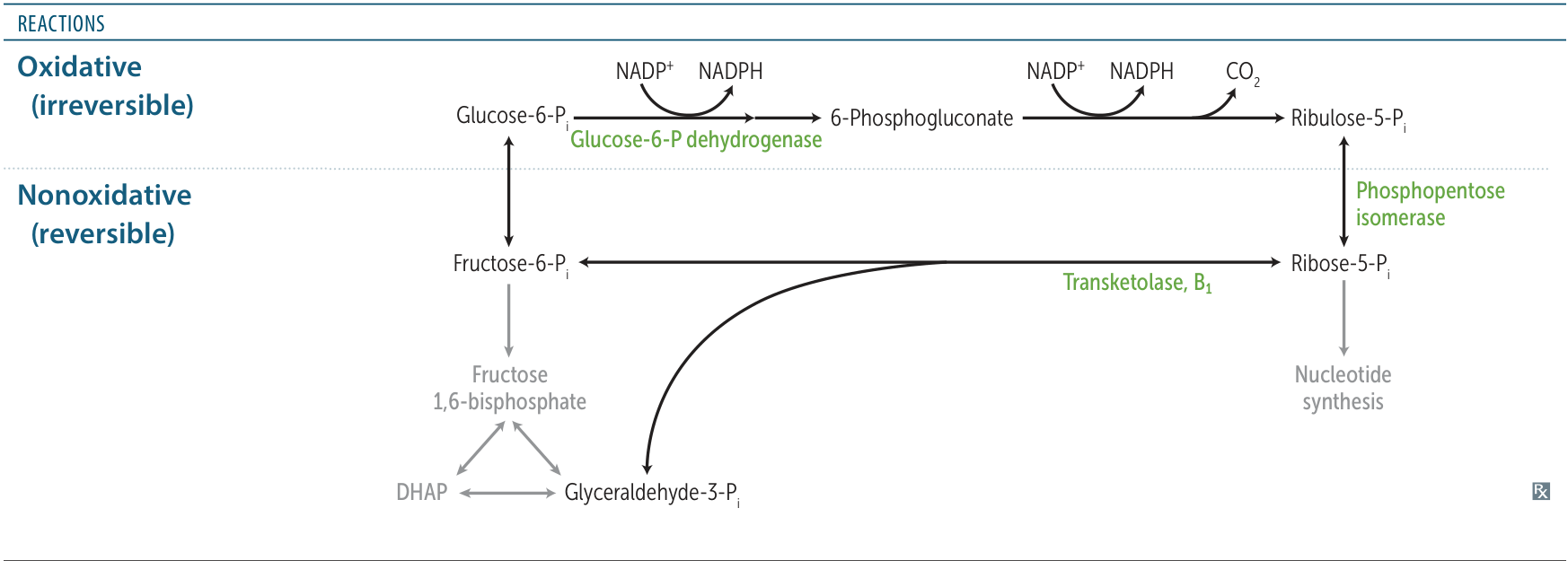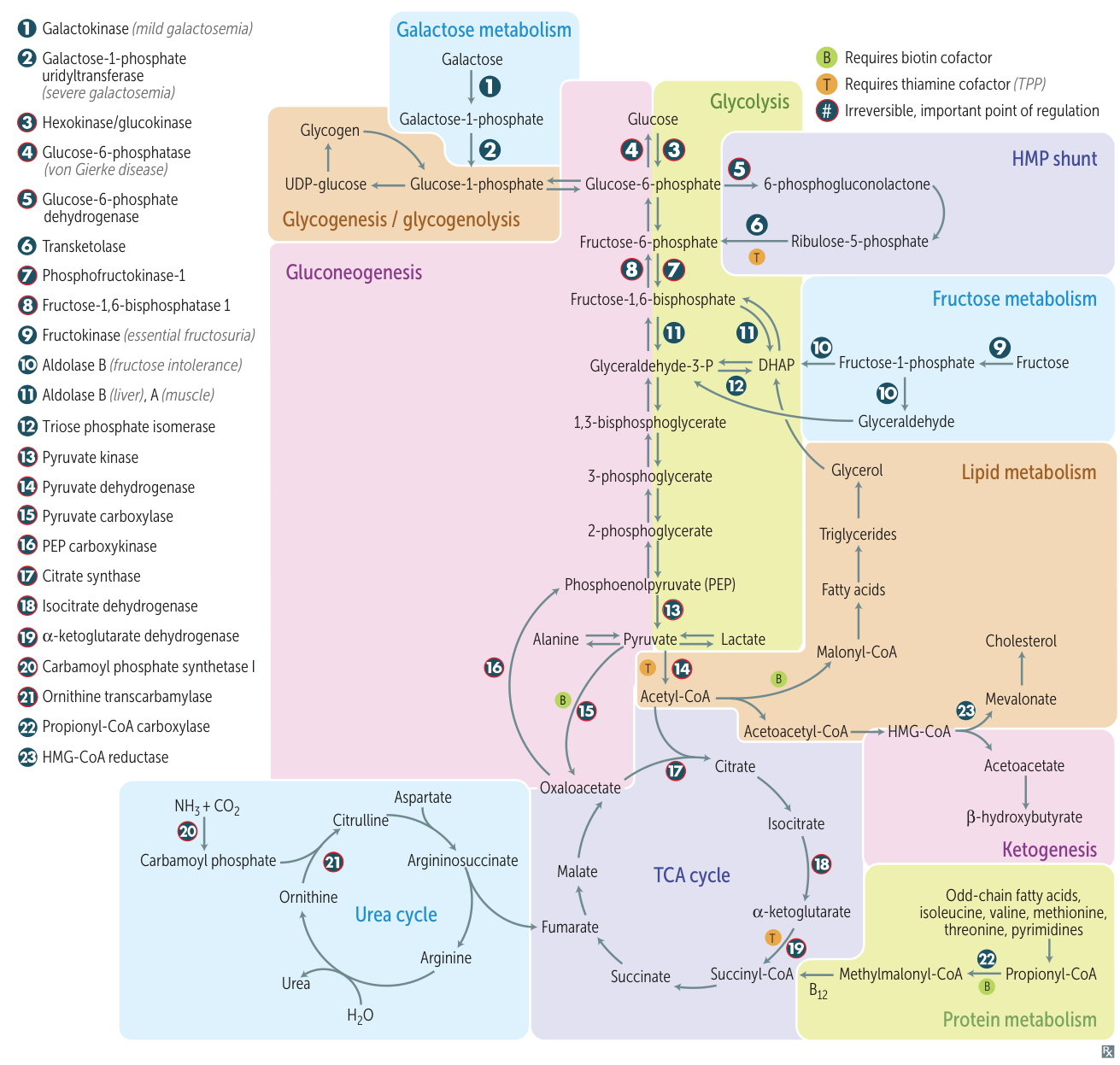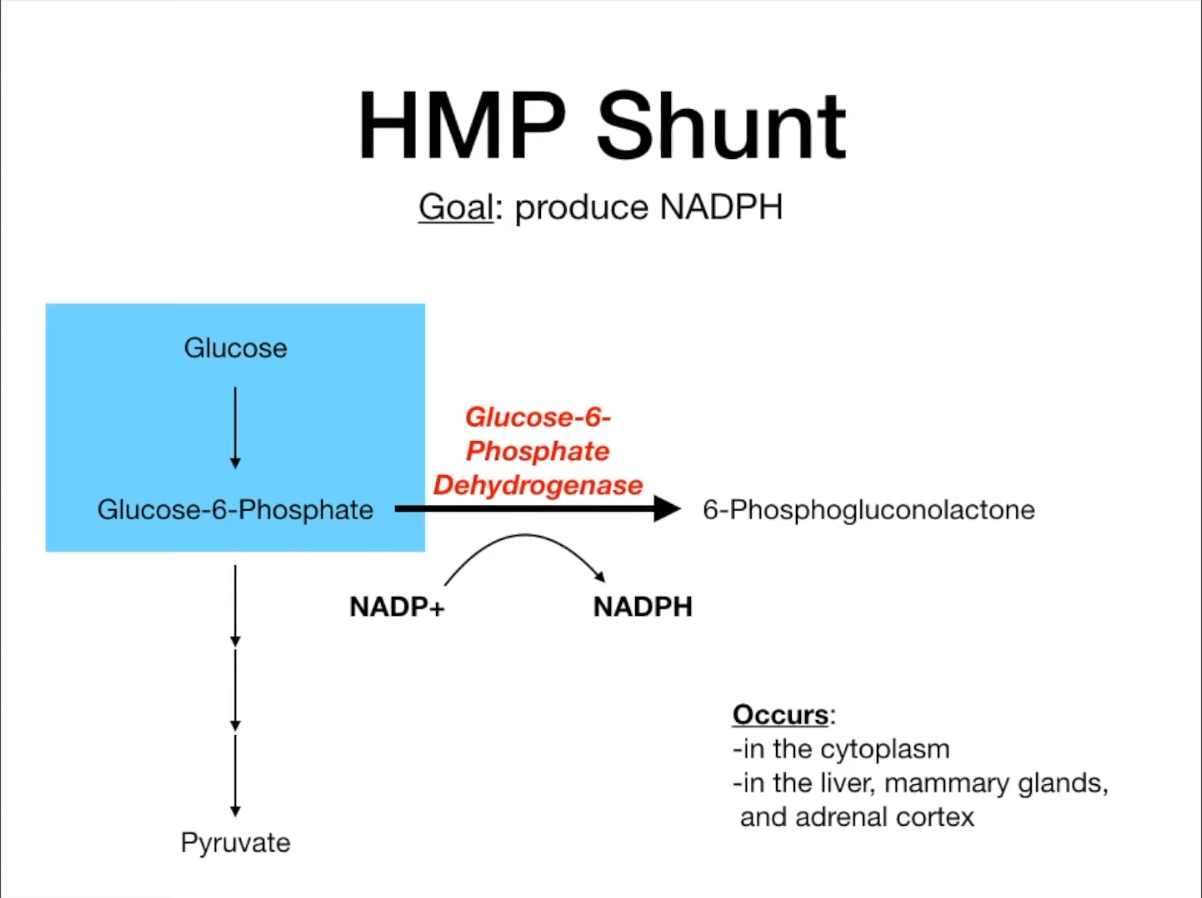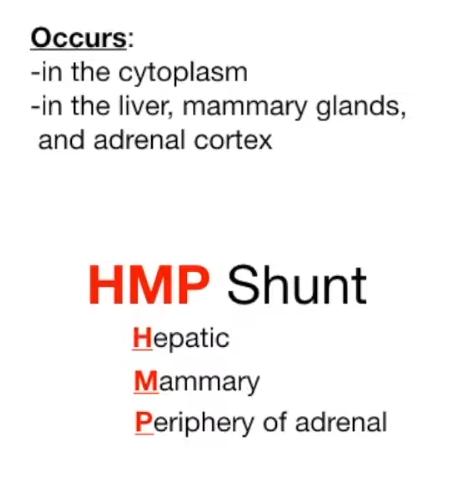Key Functions & Purpose
- Produce NADPH: Used for:
- Reductive Biosynthesis: Fatty acid synthesis, cholesterol/steroid synthesis, part of Respiratory burst
- Antioxidant Defense: Essential for regenerating reduced glutathione, which detoxifies reactive oxygen species (e.g., H2O2). This is particularly crucial in RBCs.
- Produce Ribose-5-Phosphate (R5P): A precursor for nucleotide (DNA, RNA) and coenzyme (NAD+, FAD, CoA) synthesis.
Pathway Phases

-
Oxidative Phase (Irreversible)
- Purpose: Generates 2 NADPH from one molecule of Glucose-6-Phosphate (G6P).
- Rate-Limiting Enzyme: Glucose-6-Phosphate Dehydrogenase (G6PD).
- Converts G6P to 6-phosphogluconolactone.
- Induced by: NADP+, Insulin.
- Inhibited by: NADPH (product inhibition).
- Location: Tissues with high demand for NADPH (e.g., liver, adrenal cortex, lactating mammary glands, RBCs).
-
Non-Oxidative Phase (Reversible)
- Purpose: Interconverts ribulose-5-phosphate (product of oxidative phase) into ribose-5-phosphate (for nucleotide synthesis) or glycolytic intermediates (Fructose-6-P, Glyceraldehyde-3-P). This allows the pathway to be flexible based on the cell’s metabolic needs.
- Key Enzymes:
- Transketolase: Requires Thiamine (Vitamin B1) as a cofactor. Transfers 2-carbon units.
- Transaldolase: Transfers 3-carbon units.
- Occurs in cytoplasm of liver cells


